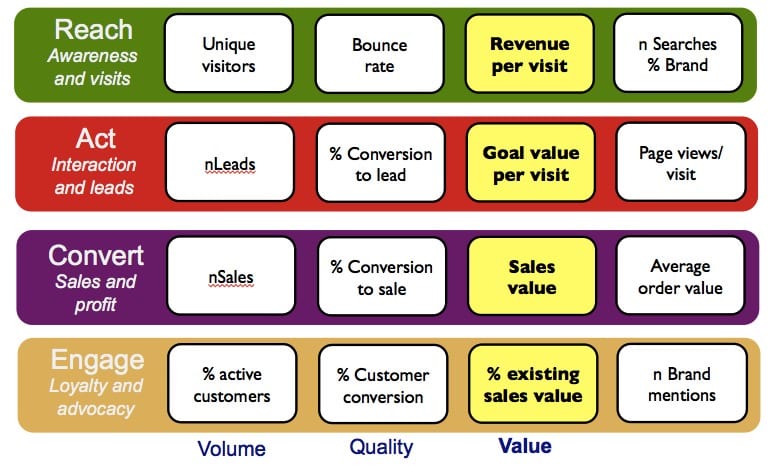Comparing customer journey frameworks
-
This post compares key customer journey frameworks – Kotler’s 5As, AIDA, McKinsey’s Customer Decision Journey (CDJ), Moments of Truth, and RACE. It highlights how each model addresses customer behavior from awareness to post-purchase engagement, especially in B2B contexts. While each framework has its strengths, the post concludes that Kotler’s 5A model is best suited for today's digital environment due to its focus on customer advocacy and continuous engagement.Description text goes here
Understanding different customer frameworks is key for choosing the right one for your business.
Understanding how customers move from discovering a brand until they become loyal buyers and advocate for your product or service is key in marketing. Customer journey models are frameworks that map out the stages a buyer goes through, from initial awareness to the final decision and beyond. These models help businesses to anticipate customer behaviour and needs at each step. This enables more effective marketing strategies. By visualizing the journey, companies can identify pain points and opportunities during the purchase process. In this post, we will explore several customer journey models and compare their features, with a focus on how they apply in B2B.
Customer Journey Models Overview
Kotler’s 5A model
Kotler’s 5A model is a modern customer framework introduced for the era of digital connectivity. The 5A’s stand for Aware, Appeal, Ask, Act, and Advocate. In this model, a customer’s journey begins when they become aware of a brand. Then they develop an interest (appeal) in that brand. Next, they actively research (ask) before purchasing a product or service (act). In the advocate stage, satisfied customers become loyal ambassadors who recommend the brand to others. The 5A model shifts the goal from driving a purchase to nurturing advocacy. Loyalty is defined as the willingness to recommend a brand, not just repeat buying. This reflects today’s social-media-driven world, where peer influence and word-of-mouth play a huge role in decisions. The 4A framework is considered customer-driven and suited to the digital age, as it explicitly acknowledges that consumers are influenced by online and offline communities at the ask stage.
We’ve got another post on how to build your customer journey with Kotler’s 5A model:
AIDA model
The AIDA model is one of the oldest and best-known journey frameworks. This framework was developed a century ago by E. St. Elmo Lewis. It outlines a linear sequence of stages that a consumer goes through. First gaining awareness of the product (Attention), then developing Interest, building a Desire for the product, and finally making the purchase (Action). AIDA assumes a hierarchy of effects in which many potential customers are reduced to a few buyers. This is often visualized as the classic funnel. This approach has been widely used in advertising and sales to guide convincing communications. However, AIDA and similar models only focus on the pre-purchase stages. They do not explicitly include what happens after the sales. Critiques note that this linear path and the lack of post-purchase consideration make it a less complete picture of customer behaviour. Still, AIDA provides a simple, foundational view of how to attract and convert customers.
The McKinsey Customer Decision Journey (CDJ)
The McKinsey Customer Decision Journey (CDJ) is a concept that emerged from McKinsey &. Company’s research into how consumers make decisions in the digital age. It emphasizes that the journey doesn’t end at the purchase. Instead, a satisfied customer can enter a loyalty loop, skipping the early stages of consideration in their next purchase. The CDJ highlights the importance of post-sales engagement. Companies must continue to deliver value and nurture the relationship so that the customers come back repeatedly. A post-purchase experience (usage and support) feeds back into their consideration for future purchases, creating a loop rather of an endpoint. The CDJ concept is very relevant in B2B contexts, where long-term relationships and repeat orders or renewals are common. It shifts focus toward customer service, product satisfaction, and loyalty programs as key parts of the journey.
Moments of Truth
“Moments of Truth” in marketing are specific points in the journey that significantly shape a customer’s impression of a brand. The concept originated from Procter & Gamble. The model defines the First Moment of Truth (FMOT) as the instant a consumer encounters a product. The Second Moment of Truth (SMOT) draws the experience of using the product at home. Later, Google introduced the Zero Moment of Truth (ZMOT). It’s the research phase before a purchase, when a customer looks up information online, reads reviews, compares options, etc. The ZMOT has become relevant, especially in the digital age, since many buyers will search for information and opinions before ever contacting a vendor or stepping into a store. There is also a concept of a Third Moment of Truth (TMOT), which essentially is reached when the customer shares feedback of the product itself.
In practice, these “moments” aren’t a full customer journey model by themselves. They rather highlight the critical touchpoints within a journey. The Moments of Truth frameworks reminds us that certain points in a customer journey disproportionately influence the outcome. Those need to be managed carefully.
RACE
Another framework often cited in digital marketing is the RACE model (Reach, Act, Convert, Engage). This model is more of a planning tool, with focus on how to engage customers across the lifecycle. First step is to reach and acquire them. Then convert the sales. Finally, engage them to foster loyalty. RACE explicitly integrates digital channels at each stage. Its strength is flexibility. It can scale to fit long B2B cycles or shorter B2C cycles, by adjusting the tactics in each phase.
Other models relevant for B2B
In B2B marketing and sales, the customer journey can be more complex than in B2C. There are often multiple decision-makers, higher stakes, and long-term relationships involved. As a result, some may consider extending existing customer journeys: Awareness → Consideration → Decision → Purchase → Implementation/Onboarding → Support → Expansion/Renewal, and potentially an Exit stage if the customer leaves.
In general, B2B organizations may combine elements from multiple models to map out their customer journey. The key is to choose a model (or mix of models) that aligns with your business’s effective sales process and customer behaviour patterns.
Comparison of customer journey models
While all customer journey models aim to describe the path from prospect to customer (and beyond), they differ in their focus and structure. Early models like AIDA and the basic sales funnel are seller-centric and linear, assuming the company directs the customer step-by-step. Newer models like Kotler’s 5A and McKinsey’s CDJ are more customer-centric, acknowledging that today’s journey is often non-linear and influenced by peers and digital content. Below is a summary comparing key attributes of these models:
| Model | Focus (Brand vs. Customer) | Digital Integration | Structure | Application (B2B vs. B2C) | Fit for Modern Behavior |
|---|---|---|---|---|---|
| Kotler’s 5A | Customer-driven (emphasizes customer community and advocacy) | High – designed for the connected, social era | Mostly linear with an advocacy loop-back | Both B2C and B2B | High – aligns with multi-channel journeys and peer influence |
| AIDA | Brand-driven (advertising and sales-led stages) | Low – developed pre-digital | Linear and one-way | Primarily B2C; can be applied in B2B for a basic funnel | Low – doesn’t reflect modern research loops or post-purchase engagement |
| McKinsey CDJ | Customer-driven (consumer in control) | High – includes online research and multi-channel touchpoints | Non-linear, circular with an iterative loyalty loop | Originally B2C; applicable to B2B with adaptations for multiple stakeholders | High – reflects non-linear behavior and retention loops |
| Moments of Truth | Experience-focused (critical touchpoints) | High for ZMOT; others vary | Not a full journey model – highlights key sequential moments | Historically B2C; applicable in B2B for critical touchpoints | Medium – focuses on critical moments rather than the full journey |
| RACE | Brand-driven in planning, based on the customer lifecycle | Very High – built for digital integration | Circular or iterative (continuous engagement) | Applicable to both B2B and B2C; adaptable based on tactics | High – focuses on ongoing engagement across channels |
When to use each model
Given the variety of customer journey models, choosing the right one depends on your business context and objectives. Different models shine under different circumstances. Below are some guidelines on when each model (or type of model) is most useful:
Kotler’s 5A model: The 5As are well-suited for businesses operating in a highly connected, digital environment (which are most businesses these days). If your customers rely on peer recommendations, social media, or online research, the 5A’s provides a framework to engage them at every step. Use the 5As when you want to align with modern consumer behaviour and not just looking for a one-time sales but ongoing engagement.
AIDA: Use for simple, linear purchase processes or when you need a straightforward way to guide marketing tactics. If your product has a short decision cycle and mostly one-way communication (for example low-cost consumer goods or straightforward online purchases), AIDA provides a clear focus on moving the customer from start to finish.
McKinsey’s CDJ: Consider using the CDJ model when you need to understand a non-linear, research-havy buying process (similar to Kotler’s 5As). This is ideal for products or services where customers actively evaluate and gather information from many sources. If your customers tend to loop back for repeat purchases or upgrades, the CDJ with its loyalty loop will help you strategize for that retention.
Moments of Truth: Rather than a full model, use the Moments of Truth to improve specific parts of the customer journey. For instance, if you suspect that your company is losing customers early, investigate the Zero Moment of Truth: are you visible when people search for solutions in your category? Use this concept when you want to optimize touchpoints. It’s very useful for improving customer experience and satisfaction at critical junctures of their journey.
RACE: The RACE model is highly practical for planning and digital execution. It focuses on measurable stages and ongoing engagement. RACE is very focused on digital engagement and continuous optimization. It is practical for tracking metrics and adjusting strategies based on data, making it very action-oriented.
Conclusion
In summary, simpler and linear models (like AIDA) are best when the buying process itself is simple or when you need a basic structure for planning. More complex, circular models (like the 5As or CDJ) are better when the buying process involves significant research, digital engagement, or opportunities for repeat business. The Moments of Truth or the RACE framework are not directly customer journeys, rather tools to improve specific touchpoints, or for planning and digital execution. The key is to match the model to your specific context. Consider the level of digital influence, the complexity of the purchase, the length of the sales cycle, and how much post-purchase interaction matters for your business.
That said, if one were to choose aa single framework for today’s digital-centric environment, Kotlers 5As model stands out as our recommended approach. It suits well to modern customers who are hyper-connected and rely on peers and online communities for their decision-making. By leading customers from Awareness all the way to Advocacy, the 5As capture the full journey, including the loyalty and beyond. It’s a versatile model that can accommodate B2C and B2B scenarios.








